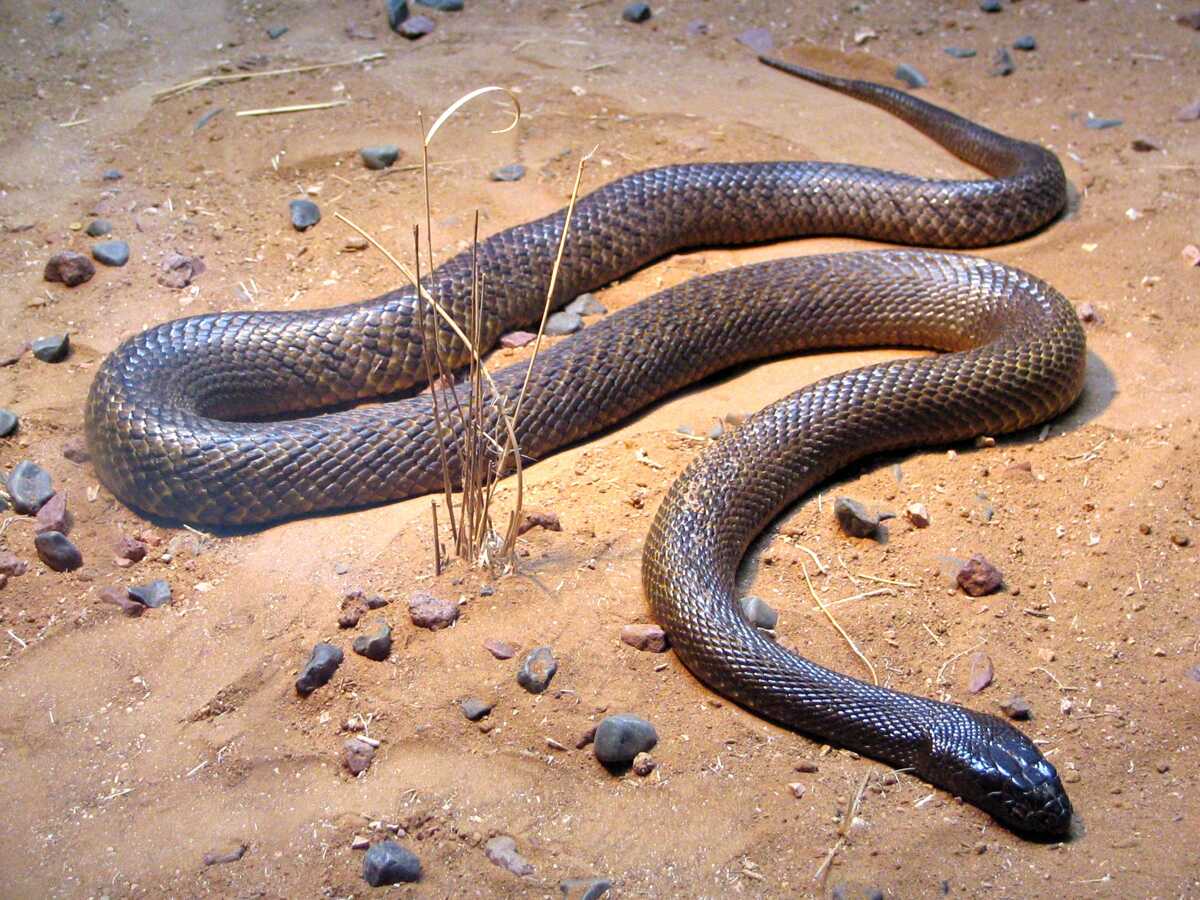{{{description}}}
With heaps of dry land and sandy areas, Central Australia is home to some of the most impressive snake species on earth. Whether you see them slithering in the bush or casually baking under the sun, keep your distance and appreciate them from afar.
Endemic to Australia, this species (Aspidites ramsayi) can grow up to 2.3 metres, although the average adult is about 1.5 metres. This nocturnal species is also referred to as Ramsay's python or the sand python. Its latin name is "Aspidites ramsayi". "Aspidites" means "shield bearer" in Latin, and "ramsayi" comes from Australian zoologist Edward Pierson Ramsay. It prefers to stay in tree hollows and leaf piles during the day. Learn more at https://en.wikipedia.org/wiki/Woma_python
Photo by F. Delventhal (CC BY 2.0)
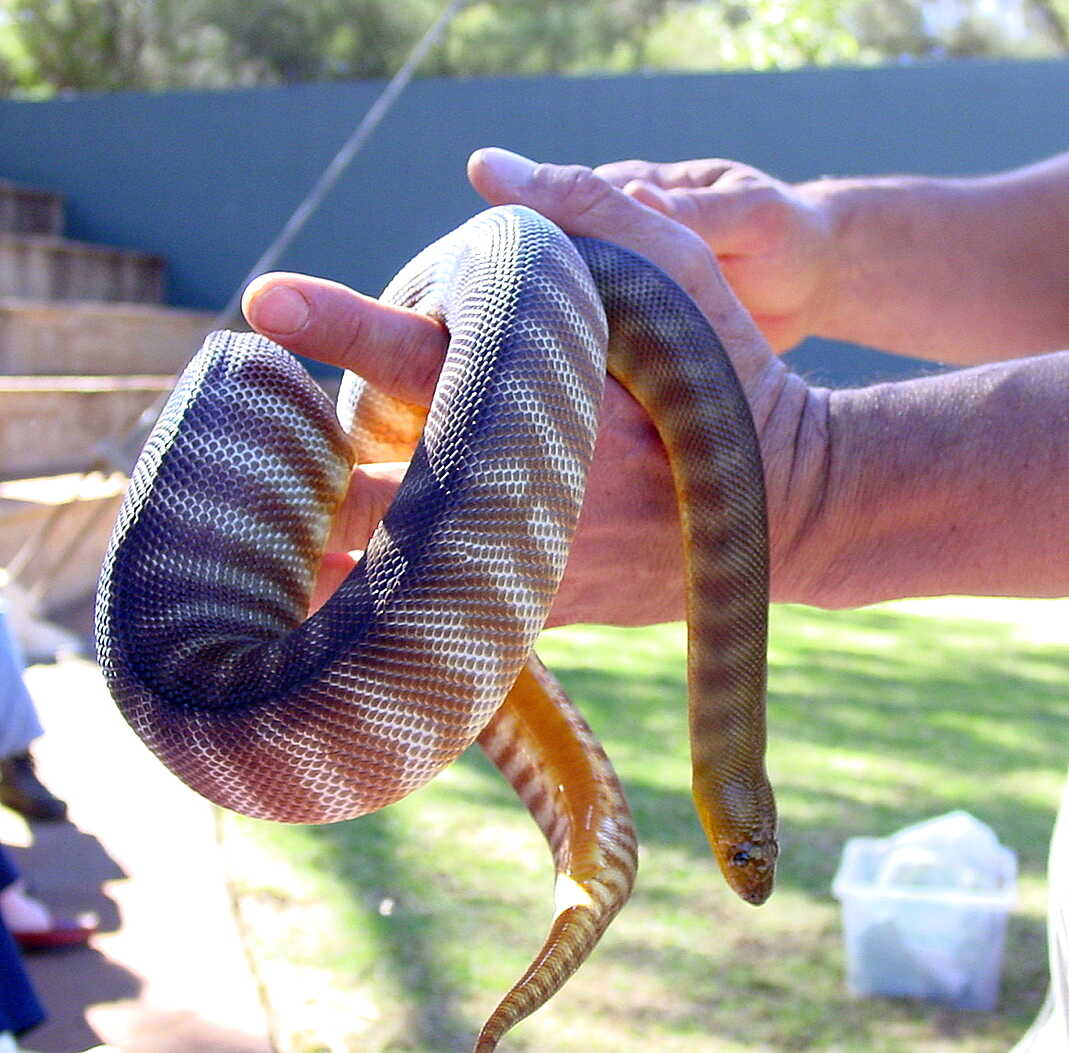
The yellow-faced whip snake (Demansia psammophis) is a diurnal species that can be seen almost anywhere but rainforests and swamps. This agile and slim snake is typically about 80 cm long. It is a venomous species, and its bite can inflict extreme pain coupled with swelling. Learn more at https://australian.museum/learn/animals/reptiles/yellow-faced-whip-snake/
Photo by Aviceda (CC BY-SA 3.0)
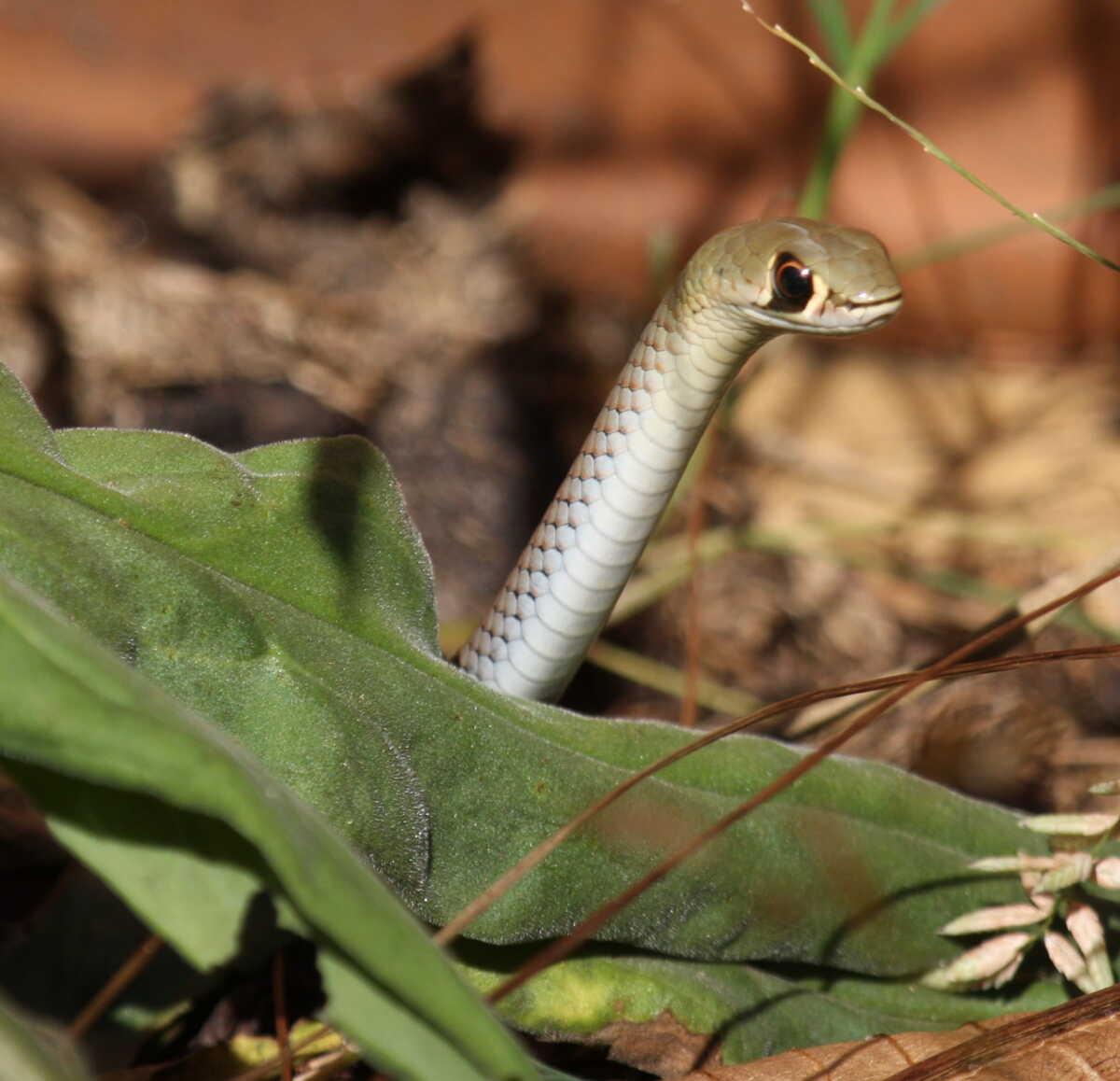
This species (Morelia bredli) has many names but is usually referred to as either the "Centralian Carpet Python" or "Bredl's Python". The "Bredl's" is there to commemorate Australian crocodile conservationist Josef "Joe" Bredl, who is the father of Rob "the barefoot bushman" Bredl. The snake can be found in deserts and arid areas in general. The average adult is around 2 metres long and can live for 20+ years. Learn more at https://en.wikipedia.org/wiki/Morelia_bredli
Photo by Christopher Watson (CC BY-SA 3.0)
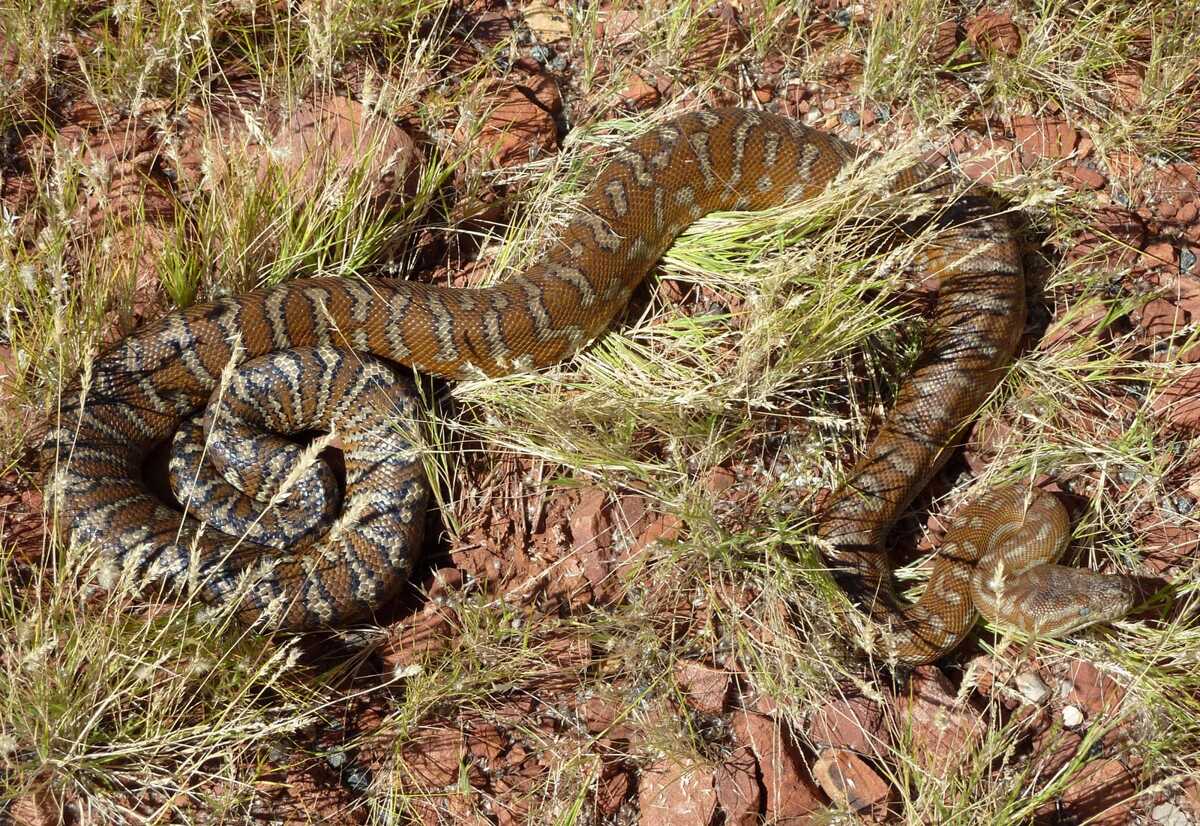
Endemic to Australia, this species (Pseudonaja mengdeni) is usually called the "Mengden's Brown Snake" or "Gwardar". It has a neurotoxic and haemotoxic venom which can be deadly. Adult western brown snakes are usually around 1.2 metres, yet there are 2-metre specimens recorded as well. This agile snake can have different colour and pattern combinations but typically has a W-shaped pattern on its head. Learn more at https://australian.museum/learn/animals/reptiles/western-brown-snakes/
Photo by Christopher Watson (CC BY-SA 3.0)

This non-venomous species (Antaresia stimsoni) hunts using the "constriction" tactic, where it asphyxiates its prey after an ambush. It can survive for months without anything to eat, which is common among snakes. It can reach up to 110 centimetres and can be seen in rock inland areas as well as woodlands, shrublands and deserts. Learn more at https://en.wikipedia.org/wiki/Stimson's_python
Photo by Christopher Watson (CC BY-SA 3.0)

This species (Suta suta) has a neurotoxic venom and is called the "myall snake" in western parts of Australia. Adult curl snakes are around 40 centimetres long, yet some specimens can grow up to 60+ centimetres. Their yellowish pupils contrast the rest of the eye, which makes the species easier to identify. The name "curl" comes from its defensive stance, where the snake literally curls up and takes the form of a spring. Learn more at https://en.wikipedia.org/wiki/Curl_snake
Photo by Christopher Watson (CC BY-SA 3.0)

Also known as the "Mulga Snake", this species (Pseudechis australis) is actually Australia's largest venomous snake species and can weigh up to 6+ kilograms. The longest specimen recorded to this day is a whopping 3.3 metres long. The species can have different combinations of colours and patterns. Its bite can still be dangerous to human beings even though its venom is not as strong as other venomous snakes. Paralysis and blood clotting can occur after the bitten area swells up if there's enough venom in the system. This species is culturally significant to multiple Aboriginal peoples. Learn more at https://en.wikipedia.org/wiki/King_brown_snake
Photo by F. Delventhal (CC BY 2.0)
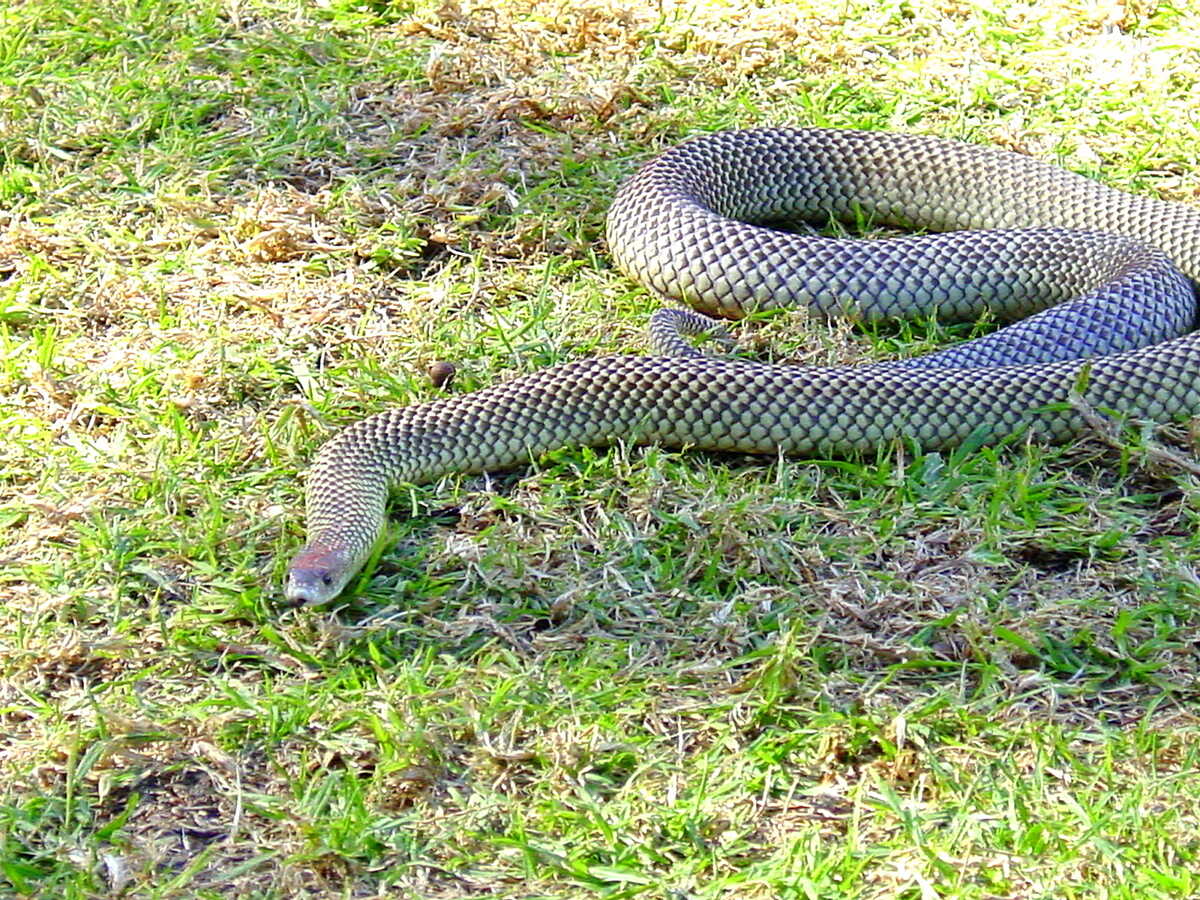
This non-venomous blind snake (Anilios bituberculatus) is endemic to central and southern Australia and has an average length of 30 centimetres. It behaves mysteriously and is quite hard to come across if you're not willing to dig up some dirt. Your chances may increase if there was recent rainfall or the weather conditions can be considered "warm". They can "fart" when upset, oozing an intense and revolting smell from their anal glands. Learn more at https://en.wikipedia.org/wiki/Prong-snouted_blind_snake
Photo by Scott Eipper (CC BY-SA 4.0)
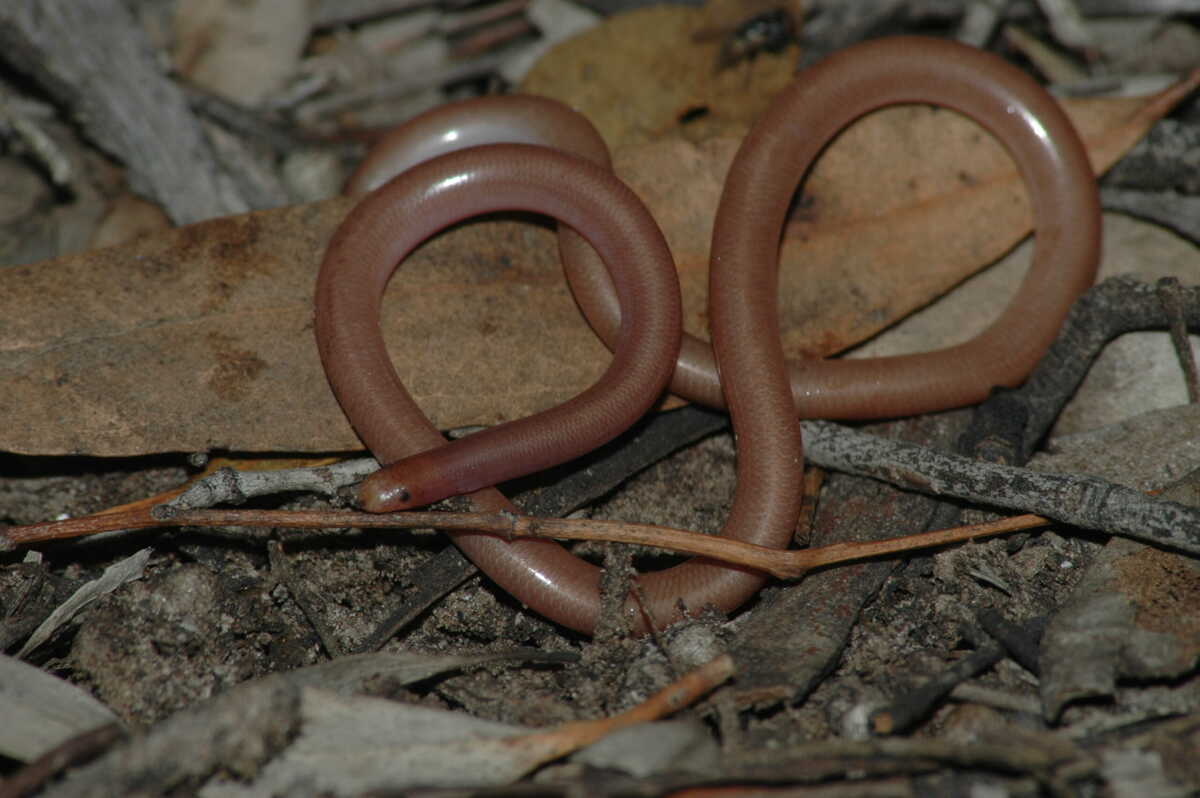
Also known as the "Common Brown Snake", this species (Pseudonaja textilis) is endemic to Australia and New Guinea. It is the second most venomous land snake in the whole world, leaving the first place to the inland taipan. Around 60% of snakebite deaths in Australia are caused by this exact species. The animal has a slim body with a maximum length of 2.4 metres. David Fleay said that this species can surpass the speed of a sprinting human being. You can come across this snake basically anywhere but dense forests. Learn more at https://en.wikipedia.org/wiki/Eastern_brown_snake
Photo by Peter Woodard (Public Domain)
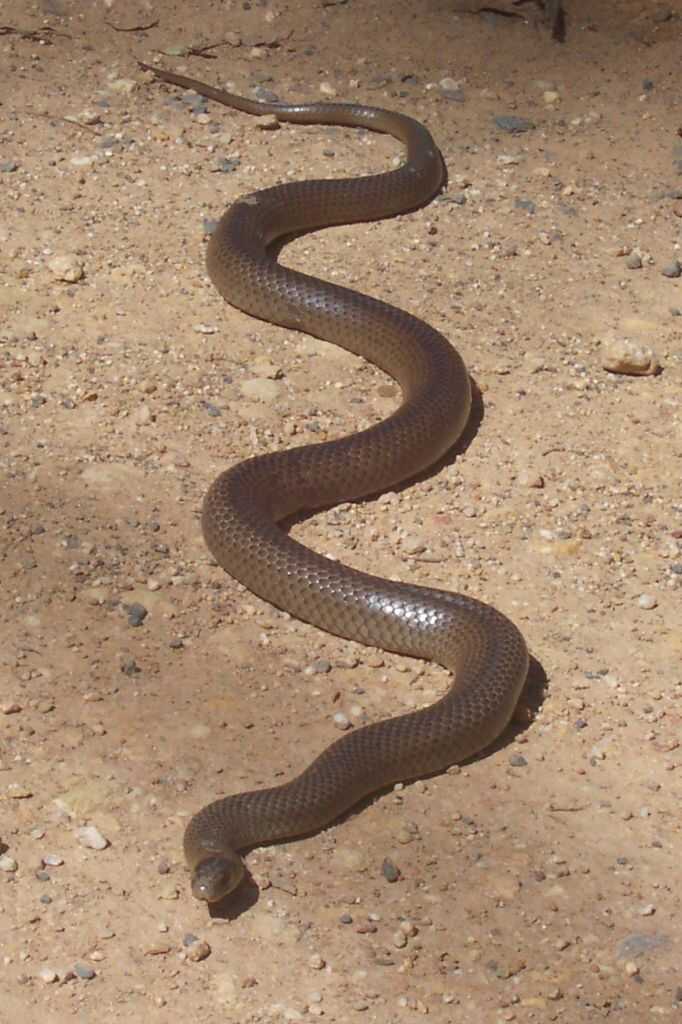
Holding the title for the "most venomous snake on earth", a single bite of this species (Oxyuranus microlepidotus) can easily kill 100 people (adult). Can be found in semi-arid areas and black soil. Average fully-grown specimens are around 1.8 metres long, with a maximum recorded length of 2.5 metres. It strictly feeds on mammals and delivers multiple consecutive bites when attacking in contrast to other venomous snake species. Learn more at https://en.wikipedia.org/wiki/Inland_taipan
Photo by XLerate (CC BY-SA 3.0)
